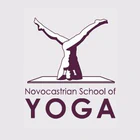




Welcome to Yoga in Newcastle at the Novocastrian School of Yoga.
The Novocastrian School of Yoga in Hamilton was established 1996.
David Morley is a certified Iyengar Yoga teacher and has been teaching Yoga since 1994.
He started his Iyengar Yoga Teacher Training in 1995 with Pixie Lillas of the Balmain Yoga Studio, Sydney.
David was certified as an Iyengar Yoga Teacher in 1999.
with B. K. S. Iyengar at his 80th birthday celebrations in 1998, and also with Geeta Iyengar and Prashant Iyengar in 1998 and 2006.
Additionally, David holds a certificate in Remedial Massage, which is useful for his understanding of body and posture and beneficial for his way of teaching yoga.
Iyengar Yoga (Pron: Eye-yeng-gar) is a very precise approach to yoga. It aims for unity of mind, body, and spirit and is firmly based on the traditional eight limbs of yoga. These limbs were outlined in an ancient text by Patanjali in The Yoga Sutras.
Much focus is laid on attention to detail and finding the correct alignment of the body in the poses. Iyengar yoga also uses props such as blocks, bolsters, and belts which help the practitioner to achieve benefits from the poses more easily to his/her ability.
Iyengar yoga was developed by B. K. S. Iyengar but the term Iyengar Yoga is used by students of Guruji in order to differentiate it from other approaches to Yoga.
For beginners, Iyengar yoga builds a strong foundation with standing poses, as they help to strengthen legs, improve circulation, improve coordination and balance. In a class, poses are actively corrected by the teacher to eliminate errors and misalignments.
Iyengar yoga can help to eliminate aches and pains and correct the body's posture. With the experience of a certified teacher, it can also aid in the treatment of many physical or medical conditions.
There are Three Key Aspects to Iyengar yoga – technique, sequencing and timing. Technique refers to the student learning how to constantly refine and perfect the execution of the Asanas (poses) and Pranayama (breath). Sequencing refers to the order in which the Asanas and Pranayama are carried out. Changes can be made to achieve a particular effect, whether that is physical or mental.
Timing is the length of time that a person spends in a particular Asana or Pranayama and the timing can be changed to enable a more in-depth exploration of the pose or breath. Iyengar yoga teaches that it takes time to achieve stability and awareness.
Iyengar yoga also teaches the concept of “Meditation in action”. This concept simply refers to the student being aware of the different parts of the body as they are performing Asanas. Initially the mind will focus on individual parts of the body, but with experience and training, it will learn to focus on the body as a whole.